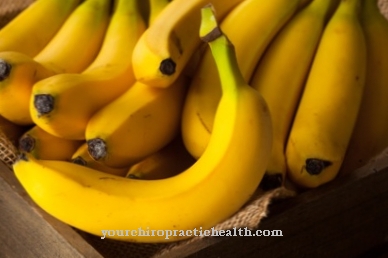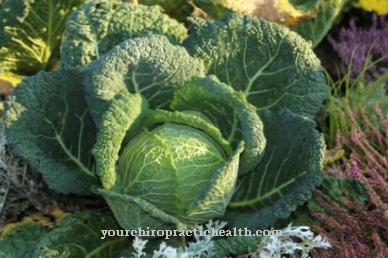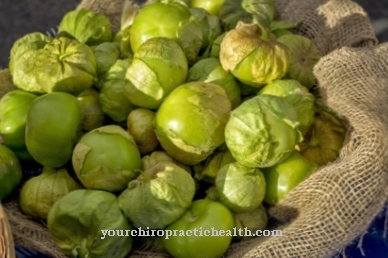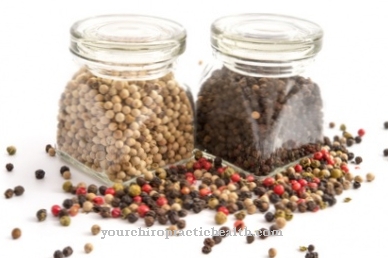The light yellow to pale green Honeydew melon can be used in many ways and is one of the popular refreshments, especially in summer. In practice, the honeydew melon is available almost all year round in Germany and can weigh between 1.5 and 4 kg. It tastes particularly good as a dessert with yoghurt and in a fruit salad, but also with ham and as an antipasto platter. The honeydew melon is also healthy, contains many vitamins and hardly any calories.
What you should know about the honeydew melon

From a botanical point of view, the honeydew melon is not a fruit but, like pumpkin and cucumber, belongs to the cucurbit family. However, it belongs to the large group of sugar melons, which includes around 500 varieties in addition to the cantaloupe melons and the net melons.
The honeydew melon itself is round to oval with a yellowish skin. The fruits can be 15 to 30 cm tall and have a yellowish green to white pulp. The kernels are connected in the middle of the fruit. More than 4000 years ago, honeydew melons were grown in ancient Egypt, which probably came from West Africa and later spread to Asia. The honeydew melon reached America through Spanish sailors in the 16th century and thrived for the first time in California and today in both Brazil and Costa Rica. The melon was already known in ancient Greece, but disappeared from Europe again in the Middle Ages.
Today the cultivation takes place in many countries with a moderate climate but also in the dry and hot tropical regions and is cultivated mainly in the Mediterranean area between Portugal, France, Spain and Italy as far as Israel. Depending on the season, the fruits in Germany come from South Africa or South America. The fruits are imported from countries such as Mexico and Chile as well as New Zealand. The honeydew melons are easy to recognize by their thin, smooth skin and are only slightly ribbed or pitted. Compared to other sugar melons such as Galia melon, the peel of the honeydew melon does not have a network structure.
The annual plants of the sugar melon species are one to five meters long and grow like pumpkins. Worldwide, the production of all sugar melons is around 16 million tons, 60% of which in China alone. The main supplier for Germany from spring to autumn, however, is Spain, closely followed by Turkey, France, Italy and Israel. Germany receives almost 15% of its sugar melons in the off-season from Brazil and Costa Rica as well as Honduras and South Africa. There are also different types of honeydew melon, for example the Orange Flesh Honey Dew variety has orange-colored flesh, but does not keep very long.
With this variety from Brazil, the skin turns slightly pink during ripening and becomes somewhat waxy. The tendral melons from Spain, on the other hand, are more reminiscent of rugby balls. They have a green, smooth skin and an aromatic, yellow-orange pulp. The flesh of the honeydew melon, however, is usually pale yellow to white and tastes very sweet and is reminiscent of honey with its taste. The pulp tastes best when slightly chilled.
Importance to health
Just 150 grams of honeydew melon completely covers the need for vitamin A for one day and half the daily need for vitamin C is covered with the same amount.
In addition to various minerals such as potassium and calcium, the honeydew melon contains other elements such as iron and magnesium as well as sodium and phosphorus. In addition to the vitamins mentioned, honeydew melon also contains other vitamins such as B1 and B2. The provitamin it contains is particularly important for cell growth and the visual process and is converted into vitamin A in the body.
Ingredients & nutritional values
| Nutritional information | Amount per 100 gram |
| Calories 36 | Fat content 0.1 g |
| cholesterol 0 mg | sodium 18 mg |
| potassium 228 mg | carbohydrates 9 g |
| Fiber 0.8 g | protein 0.5 g |
The honeydew melon is a popular refreshment, especially in summer. With a water content of around 85 to 90 percent, the pulp is very juicy and also pleasantly sweet and a good thirst quencher. In addition, with 36 kcal per 100 g, honeydew melons have very few calories, only traces of fat and just 9 g of carbohydrates per 100 g, which also makes them very pleasant for a diet.
Intolerances & allergies
Primary melon allergies are very rare, but cross-reactivities to grass and ragweed pollen such as latex, celery and banana, cucumber and carrot are proven intolerances. In addition, the consumption of honeydew melons can trigger systemic reactions and oral allergy syndromes.
For this, the name ragweed-banana-melon syndrome was coined in the literature, which can occur in around 2.9 to 11 percent. In the prick test, there were also isolated immediate allergic reactions to honeydew melons, which were accompanied by swelling of the cheeks and lips and slight swallowing difficulties
Shopping & kitchen tips
Honeydew melons are available from us almost all year round. A really ripe honeydew melon is difficult to recognize and has no typical characteristics for the degree of ripeness.
Honeydew melons no longer ripen; an unripe honeydew melon that has been sliced can then only be used in a fruit salad. The fruits can be kept for a long time, but not necessarily in the refrigerator. Honeydew melons can be stored for up to 3 months at 10 - 15 ° C and a humidity of 90 - 95%. They should also be stored for several hours at room temperature before consumption. Once cut, honeydew melons can be wrapped in cling film and stored in the refrigerator for a few days.
The preparation is also very easy, because the seeds are located in the center of the melon and can be easily removed with a spoon. To do this, the melon is halved, the stones removed and then quartered again. Now the pulp can be cut into slices and then removed from the skin with a knife. The slices are now either arranged in the melon peel or processed straight away.
Preparation tips
The honeydew melon can either be eaten pure as a refreshment or processed into a fruit salad. To do this, prepare the honeydew melon, cut it into small pieces and mix with other fruits. Halved grapes, pear pieces, banana slices and a small can of tangerines with juice are ideal. Sugar is practically unnecessary. If you want, you can add a tablespoon of raisins and sliced almonds.
The fruit salad should steep for about an hour and can then be consumed. In Spain in particular, honeydew melon is also served with Parma ham as a starter. To do this, the honeydew melon is prepared and the pulp is cut into bite-sized pieces. Then loosely roll up small slices of Parma ham and stick with the pulp on small wooden skewers.













.jpg)

.jpg)
.jpg)











.jpg)